INDIAN ARMY ADVANCES. Couldn’t admire enough, the driver’s dexterity navigating such a difficult pass. Also admiring our infra progress in such a short space of time capable of dreaming big things











INDIAN ARMY ADVANCES. Couldn’t admire enough, the driver’s dexterity navigating such a difficult pass. Also admiring our infra progress in such a short space of time capable of dreaming big things
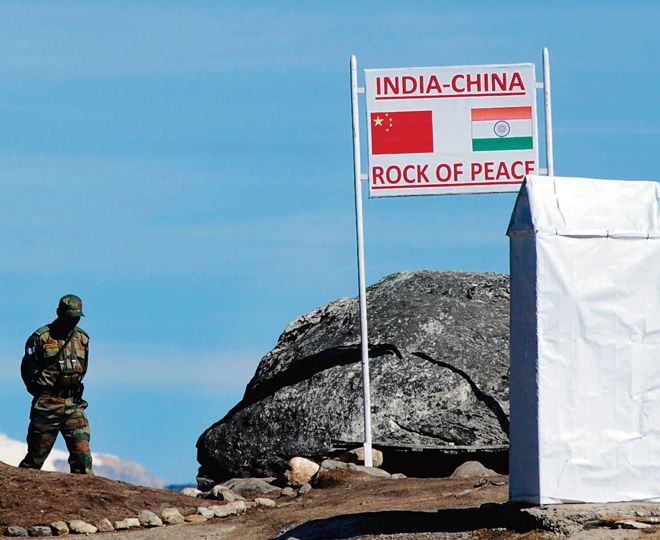
Sandeep Dikshit
New Delhi, April 4
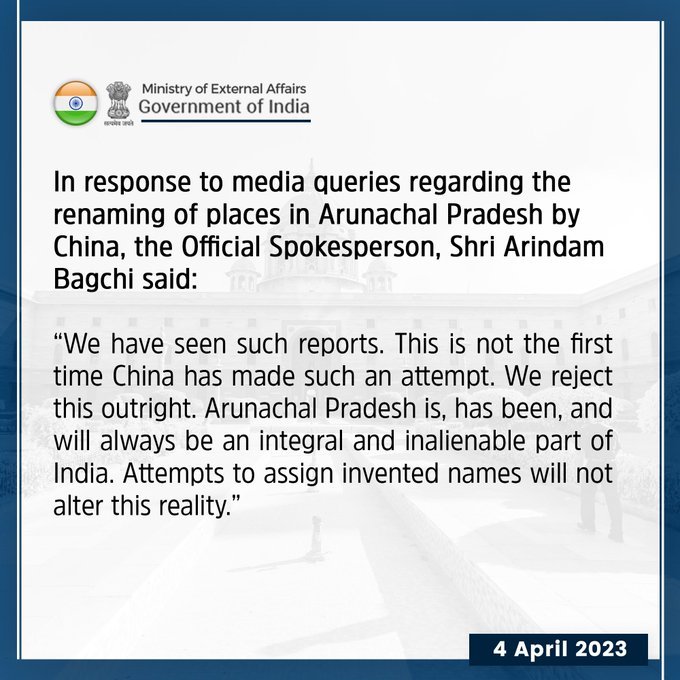
India said on Tuesday it rejected attempts by China to rename places in its eastern state of Arunachal Pradesh. “Arunachal Pradesh is, has been and will always be an integral and inalienable part of India,” said Foreign Ministry spokesperson Arindam Bagchi in response to media reports on the Chinese Civil Aviation Ministry releasing the third batch of Sincised locations in Arunachal Pradesh.China had defended the renaming of 15 places in Arunachal Pradesh by its Ministry of Civil Affairs in 2021, claiming that the state is actually southern Tibet, an “inherent part” of its territory. Its Foreign Office had also stated that these matters are within “China’s sovereignty”. Beijing calls Arunachal Pradesh “Zangnan” (southern part of Southwest China’s Xizang Autonomous Region). As was the case on Tuesday, the MEA had strongly rejected the renaming of places in the past. Then, too, it had asserted it has “always been” and will “always be” an integral part of India. It had then added that “attempts to assign invented names will not alter this reality”. This formulation was also included in Bagchi’s brief response on Tuesday. “The official names of the 11 places were released by the ministry on Sunday, which also gave precise coordinates, including two residential areas, five mountain peaks, two rivers and two other areas. It also listed the category of places’ names and their subordinate administrative districts,” said the state-owned Global Times. In order to strengthen the standardised administration of place names, China’s move to standardise the names in “Zangnan” completely “falls within China’s sovereignty” and it is also in accordance with the regulation on the administration of geographical names, it added, quoting a staffer of a Chinese think-tank. Some river names were “standardized”, to make people “more aware” of China’s territory, said the researcher Zhang. The names were written both in standard Chinese characters and Tibetan, reflecting the respect for ethnic culture in accordance with the law, he said.
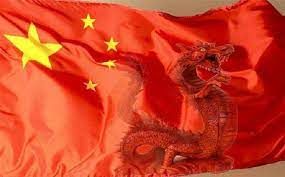
New Delhi, April 4
Rejecting attempts by China to rename places in Arunachal Pradesh, India today said the state was its integral and inalienable part and assigning “invented” names would not alter this reality.
Responding to media reports on the Chinese Civil Aviation Ministry releasing the third batch of Sinicised locations in Arunachal, Foreign Ministry spokesperson Arindam Bagchi said, “We have seen such reports. This is not the first time China has made such an attempt. We outrightly reject this.”
Third attempt
April 21, 2017: China renames six locations in Arunachal
Dec 30, 2021: Again renames 15 more locations in the state
April 3, 2023: Releases third batch of names for 11 locations
As was the case today, the MEA had strongly rejected the renaming of places in the past. China had defended the renaming of 15 places in Arunachal in 2021, claiming the “state was actually southern Tibet, an inherent part of its territory”. “This is within China’s sovereign rights,” argued Chinese Foreign Ministry spokesperson Mao Ning on Tuesday. Beijing calls Arunachal Pradesh
“Zangnan” (southern part of Southwest China’s Xizang Autonomous Region).
Earlier, too, India had asserted that Arunachal had “always been” and would “always be” an integral part of India. It had then added that “attempts to assign invented names will not alter this reality”. This formulation was also included in Bagchi’s brief response on Tuesday.
It was the third batch of standardised geographical names for Arunachal issued by China’s ministry. The first batch of the standardised names of six places was released in 2017 and the second batch of 15 places was issued in 2021. The official names of the 11 places were released on Sunday. It also gave precise coordinates, including two land areas, two residential areas, five mountain peaks and two rivers, and listed the category of places’ names and their subordinate administrative districts, Chinese state-run Global Times reported on Monday.
China’s renaming of the places comes in the midst of the lingering eastern Ladakh border standoff that began in May 2020. Following the standoff, India bolstered its overall military preparedness along the Line of Actual Control in the Arunachal sector as well.

New Delhi, April 4
Seven tourists were killed, at least 12 injured and several were reported missing after an avalanche on the Gangtok-Nathu La road this morning. A second avalanche at the same spot in the evening stalled rescue efforts.
Toll may rise as many feared trapped

Six vehicles carrying about 30 tourists were impacted by the snowslide en route Nathu La in the morning. “Seven persons succumbed, another seven were administered first aid and have returned to Gangtok,” Army officials said, adding that in all, 27 persons, including the seven dead, had been accounted for now. The number of those injured or dead could rise, the officials said.
The first avalanche occurred between milestone 15 and 17 on the Gangtok-Nathu La road. A second avalanche occurred at the same spot around 5.35 pm. Fresh snow in the evening stalled the rescue operations around 6 pm and the road got closed again. “The local Deputy Commissioner has called off the rescue operations for now fearing fresh snowslides and threat to rescue teams,” an official said.
The strategic Gangtok-Nathu La road, which was closed after the first snpwslide, was opened after a massive effort by the Army and the Border Roads Organisation (BRO). Troops of the Army’s 33 Corps swung into action and launched a rescue mission along with the BRO, which has machinery ready for exigencies. A search and rescue mission for the missing persons was underway by the Army, a state disaster management team and the police until the fresh snow slide at 5.35 pm.
Between the first and the second avalanche, some 350 tourists, who had been stranded, and 80 vehicles, moved back to Gangtok.
Located along the Line of Actual Control (LAC) in the eastern part of Sikkim, Nathu La is open to tourists.
PM Narendra Modi, Union Home Minister Amit Shah and former Congress president Rahul Gandhi offered condolences to the families of the deceased. Modi tweeted, “Distressed by the avalanche in Sikkim. Condolences to those who have lost their loved ones. I hope the injured recover soon. Rescue ops are underway and all possible assistance is being provided to those affected”.
Shah tweeted, “My sincerest condolences to the families of those who have lost their lives in the tragic avalanche in Sikkim. We are closely monitoring the situation and teams of the NDRF will reach the affected area soon. I pray for the speedy recovery of those injured”.
Rahul said, “Deeply distressed by the news of the massive avalanche in Sikkim’s Nathu La… My thoughts are with the victims of this terrible tragedy, and their families. Wishing all the best to the teams involved in the rescue mission.”
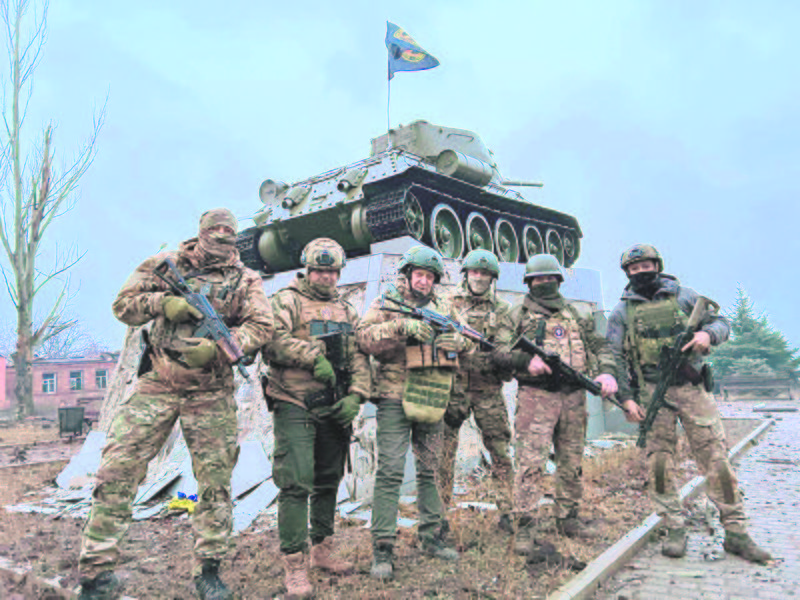

On November 9, 2022, Pope Francis condemned the use of mercenaries in Ukraine, saying that they were inflicting “so much cruelty” on the population. The global media had then alleged that the Wagner Group, a Russian private military company, was responsible for the atrocities. However, Russian President Vladimir Putin said Wagner did not represent the state but had the right to work anywhere in the world as a private military contractor as long as it did not break the Russian law.
Yet, there were indications that the Wagner Group was officially treated on a par with the Russian government organs, if not preferentially. On March 14, the Russian Duma (Parliament) passed a law making it a crime to ‘discredit’ Wagner fighters. On March 30, Evan Gershkovich, an American national who is a Wall Street Journal reporter, was arrested in Yekaterinburg (Russia) for enquiring about the group.
In 2017, a video appeared of a Syrian man being decapitated by the Wagner Group for deserting the Syrian army. On March 16, news agency Reuters published a special interview of five Russian prisoners who had fought in Ukraine in return for a promise of freedom by Yevgeny Prigozhin, founder of the Wagner Group.
Although the global media has been replete with Wagner’s activities, the arrest warrants issued on March 17 against Putin and Presidential Commissioner for Children’s Rights Maria Alekseyevna Lvova-Belova by the Pre-Trial Chamber II of the International Criminal Court (ICC) mention only the forcible and illegal deportation of Ukrainian children to Russia.
This is because of the incredibly lengthy definition of ‘mercenary’ in Article 1 of the International Convention against the Recruitment, Use, Financing and Training of Mercenaries (1989). Briefly, a mercenary is not a member of the parties in conflict, nor part of their regular armed forces, but motivated only by private gain or specially recruited for undermining the territorial integrity of a state. If this definition is fully implemented, all ‘clandestine’ intelligence operations against another country would fall within its ambit.
When the Ukraine war started, Russia had alleged that NATO soldiers were fighting in Ukrainian army uniform. This was not proved, though there were instances of fighters of other nationalities joining the war on ‘sympathetic’ considerations. If such elements are permitted, it would be difficult to punish only the Wagner Group.
Besides, several countries have used clandestine agents to subvert other countries. The US, which has codified a legal definition of ‘covert operations’, would be the first target. Title 50 US Code defines covert operations as an activity to ‘influence political, economic or military conditions abroad’ where the US role would not be apparent. That is, perhaps, the reason why the ICC warrants have excluded the Wagner Group.
History tells us that mercenaries were used all over the world till the 1648 Westphalian Peace Treaty, which was signed after the 80 Years’ War (1568-1648) and 30 Years’ War (1618-1648). Around 20 per cent of the European population perished during these wars. Germany was totally devastated and plundered by thousands of mercenaries. These brutal wars brought home the need to regularise the law on wars.
In due course, the Westphalian Treaty, with its 128 clauses, guided the charters of the League of Nations (1920-1946) and the United Nations (UN) in 1945. Following this, the UN clearly prohibited the use of mercenaries based on the 1907 Hague Convention, Article 2 (paragraph 4) of the UN Charter (1945), Article 3 of the Geneva Convention (1949) and 1989 International Convention against the Recruitment, Use, Financing and Training of Mercenaries.
India had an indirect experience with foreign mercenaries in 1981 during a failed coup against the then Seychelles President France-Albert Rene. The ‘Froth Blowers’ under former British-Indian Army Major Thomas Michael Hoare, known as ‘Mad Mike’ Hoare, took control of an Air India Harare-Bombay flight from the Mahe airport on November 25, 1981, and diverted it to Durban. In 1986, there was another coup attempt against Rene, after which he had requested the then Prime Minister Rajiv Gandhi to depute a team of Indian intelligence officials to upgrade their preventive security.
Yevgeny Prigozhin has been prominently in the news after it was found that the regular Russian army was not able to meet Putin’s strategic objectives. The court documents accessed by The Guardian (UK) indicate that his criminal history started in 1980 following a robbery in St Petersburg. For this and other crimes, he was sentenced to 13 years in prison. After release in 1990, he became a hot dog vendor and later a food caterer. He worked his way up to provide food to high-class hotels and private groups.
Gradually, he came to know Putin and became an event manager through his company Concord, bagging government contracts. A photo of him serving wine to the then visiting US President, George W Bush, and his wife during a dinner hosted by Putin at Villa Lindström in 2006 was published by The Guardian.
According to The Guardian, in 2014 Russian Defence Ministry officials were asked to meet Prigozhin to give land to him at Molkino in southern Russia to train ‘volunteers’ who would have no official links to the Russian army. That was the beginning of the Wagner Group, which started with Crimea in 2014 and Syria in 2015.
Prigozhin was the subject of an FBI lookout notice in 2022 for his alleged interference in the 2016 US presidential election from early 2014 to February 16, 2018, as “the primary funder of the St Petersburg-based Internet Research Agency”. On January 26, the US Treasury issued sanctions against the Wagner Group for being “a transnational criminal organisation”.
The Organised Crime and Corruption Reporting Project (OCCRP), a global network of investigative journalists in six continents, chose Prigozhin as the ‘2022 Person of the Year’ in ‘organised crime and corruption’ for being a mercenary leader who had become “perhaps the most conspicuous avatar of everything that is darkest about his motherland.”
Views are personal

Islamabad, April 4
Pakistan-occupied Kashmir (PoK) government has initiated an investigation to ascertain the facts regarding the adoption of a resolution in the region’s Legislative Assembly seeking an opening of a Kartarpur-type corridor connecting both sides of Kashmir.
PoK “Prime Minister” Sardar Tanveer Ilyas Khan shared this plan in his speech at a dinner hosted by him in honour of Hurriyat leaders, the Express Tribune newspaper reported on Tuesday.
Khan expressed his serious concern over the resolution presented in the Legislative Assembly and said a fact-finding inquiry was underway and added it would soon be made public.
Inaugurated in 2019, the Kartarpur corridor links Gurdwara Darbar Sahib in Pakistan, where Sikhism founder Guru Nanak Dev lived and died at the start of the 16th century, to Dera Baba Nanak shrine in Punjab’s Gurdaspur district. The 4 km-long corridor provides visa-free access to Indian pilgrims to visit Gurdwara Darbar Sahib.
Virtually inaugurating the Mata Sharda Devi temple near the Line of Control in the Karnah sector of Jammu and Kashmir last month, Home Minister Amit Shah said the opening of the temple has been made possible by the blessings of Mata Sharda Devi and by the joint efforts of the people on both sides of the LoC.
Referring to the demand for the opening of the Sharda Peeth across LoC on the lines of the Kartarpur Corridor, Shah said the Centre will surely make efforts on this and there is no doubt about it.
Sharda Peeth, the seat of Sharda, the Kashmiri name for goddess Saraswati, was one of the foremost ancient universities of the Indian subcontinent.

New Delhi, April 4
With propaganda material of global terror outfit ISIS surfacing, carrying threats to resort to “mass murders and beheadings” in protest against laws being enacted against “love jihad” by various states in India, intelligence and security agencies are on high alert.
Propaganda article
According to intelligence officials, an alert has been sounded to states mentioned in the propaganda article, which has been written in Hindi this time around. “It has claimed that UP, Uttarakhand and Madhya Pradesh have enacted anti-love jihad laws and other states are also resorting to put in place similar legislations,” said a senior official.
In the article, the terror outfit has claimed that such laws were aimed at empowering certain communities to embroil Muslim youths and weaken them and against this, mujahideen were coming “to behead those who have framed the Ummah (Muslim community)”, the intelligence officials said, adding the police in the states and central agencies were keeping a close watch.
Incidentally, in the propaganda article, ISIS has also asserted that love jihad was not a new concept and had been prevalent since the 19th century to target Muslims. Such recurring threats from ISIS have been coming in the backdrop of the outfit’s expansions in the country with the creation of two sub-groups for South India and Sri Lanka, sources said.
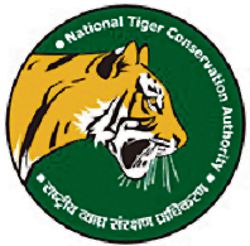

“Tyger tyger, burning bright,
In the forests of the night;
What immortal hand or eye,
Could frame thy fearful symmetry?”
— William Blake
Wildlife science is conclusive that Panthera tigris tigris species had evolved some 2.4 million years ago in the forests of the Amur river watershed in far-eastern Russia and was commonly called the Siberian tiger. Much like all other creatures of the animal kingdom, after due consolidation as a life form, it gradually swept southwards, mainly along the eastern and southern seaboards of the Asian mainland. There was a limited spread in Central and Western Asia as well. This process concluded about 12,000 years ago when the tiger reached the southern arc from Kanyakumari in India to Bali in Indonesia. Due to certain geological evolutionary factors, the tiger remained exclusively an Asian mammal.
There never was a census of the tiger in India, or for that matter of wildlife per se. It was for the first time in 1963 that EP Gee, a tea-planter from Assam and an eminent naturalist, provided a guesstimate that in 1900 AD, there were perhaps 40,000 tigers in India. This figure has since been accepted as a reasonable working hypothesis. Unfortunately for the tiger, the year was also the high mark of the Raj in India when shooting a tiger became a status symbol, as much with the British as the Indian nobility.
But for the fateful intervention by the two World Wars, the tiger in India may well have been hunted to extinction in the first half of the 20th century. The stories of tiger-hunting excesses are simply unbelievable. For instance, a hunt organised over 10 days in 1903 in the Terai region claimed 32 tiger lives. Similarly, 39 tigers were shot by King George V on a state visit to Nepal in 1911. Between 1933 and 1940, guests of the Nepalese Prime Ministers dispatched another 433 tigers!
Little wonder then that by 1970, the number of tigers in India had plummeted to a guesstimated 1,800. At this stage, Prince Bernhard of the Netherlands as chairman of WWF-International mounted a global initiative to save the tiger, and by 1972, created a corpus of $1 million for a start. Next, he arranged an urgent meeting between Guy Mountford, trustee of the WWF, and Prime Minister Indira Gandhi to plead that as India was the last bastion of the surviving ‘viable tiger population’, it was best placed to prevent the looming extinction. On April 18, with her characteristic grace and steely determination, the Prime Minister accepted the challenge and also spontaneously pledged an equivalent of $1 million to the tiger corpus!
In Mountford’s words of that historic meeting, “Prime Minister Gandhi is a remarkable woman, with a genuine interest in both wildlife and conservation… her manner in discussion alternates between feminine charm and impressive masculine decisiveness. She was determined that everything possible should be done to save the tiger. She said she would form a special task force to report to her. To everyone’s astonishment, the task force was formed the next morning and it met the following day.”
She next chose her Cabinet colleague Dr Karan Singh to lead the task force, with the mandate to formulate a ‘mission blueprint’ and likely tiger reserves in three months. Dr Karan Singh chose his team of 10 prominent nature conservationists, whose blueprint won Indira Gandhi’s approval, including the proposals that (a) the task force be replaced by a ‘steering committee’ and (b) the declaration of tiger as the National Animal since it inhabited 27 states of India whereas the lion was from Gujarat alone. In a subsequent meeting, the Prime Minister assumed the role of chairperson with Dr Karan Singh as vice-chairman, and Kailash Sankhala of the Indian Forest Service as director. The committee was to report progress to her once every month. She chaired the meetings without a single postponement.
As to how deeply Indira Gandhi got committed to Project Tiger, she ventured to ask Sankhala, “What are your demands?” Now we find tiger’s destiny prompting Sankhala to say, “Give me 10 years without political and bureaucratic interference and God-willing, we shall save the tiger, Madam!” or words to that effect. And the rest is history. Over the next 15 years, and before her assassination in 1984, the tiger was considered well on the way to total recovery, with the official estimate of about 2,500 animals in the country’s first nine tiger reserves alone. In addition, there were some more tigers in India’s remaining wilderness.
As the Corbett National Park was India’s first ‘forest reserve’ created in 1936, it was in the fitness of things that the Prime Minister would officially launch Project Tiger from there on April 1, 1973.
Integration into joint formation structures is a very important issue professionally impacting the functioning of the armed forces to best meet national security challenges. Given the commitments on the borders necessitating the primacy of operations by the Army, with units and formations being deployed around the year, unified command structures have to be viewed in terms of our current challenges rather than through the seductive prism of a superpower with expeditionary forces.
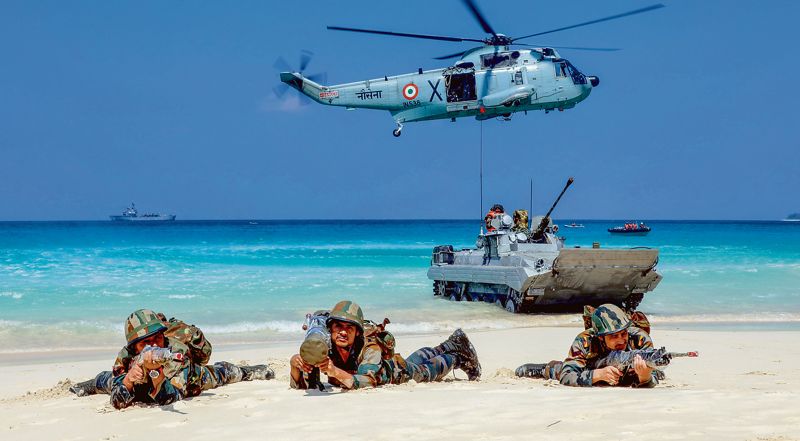
Advertisement
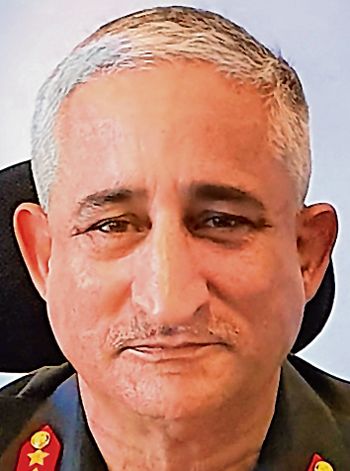
THE Inter-Services Organisations (Command, Control and Discipline) Bill, 2023, was introduced in the Lok Sabha on March 15. It provides disciplinary powers to the commanders heading tri-services organisations and is a requisite precursor to the creation of unified theatre commands, which are a long-awaited reform. During his address at the tri-services commanders’ conference on April 1, the Prime Minister spoke about this integration and it was one of the key issues discussed. A government decision on this matter is expected soon.
Integration of the armed forces into joint formation structures at the operational level is a very important issue, professionally impacting the functioning of the armed forces to best meet national security challenges. It is for the military leadership to evolve and nurture these into a robust organisation that optimally harnesses national military power. However, the turf war between the three services for safeguarding their parochial interests and importance has overly delayed its implementation. A clear directive from the political leadership was required and the same is now happening.
The impending move to establish integrated or joint commands will result in all manpower and assets of two or more services in a particular theatre being placed under the operational control of a single HQ, headed by a Lt General/ equivalent from the Army, Navy or the Air Force. This is likely to manifest as joint theatre commands — western, eastern and northern for the land borders, maritime commands for the eastern and western seaboards, and air defence.
With this exercise underway, it is essential to understand ground realities relevant to our national security and the existing geopolitical situation. To be a great power, India needs a large and modern Navy with a trans-oceanic reach, adequately equipped with surface, sub-surface and aerial platforms for varying roles. While the Navy is a potent player in furthering diplomatic reach, it also needs to be counted while tabulating force parities and deterrence capabilities, especially against our northern adversary. The maritime role is not a standalone exercise; acquisitions such as aircraft carriers should amply complement the efforts of the land forces deployed along the Himalayas. In the same vein, the Air Force must possess the capability to not only guard our vast airspace, but also provide operational reach and effective air support to the field army, thereby enhancing its deterrent value.
India’s current security problems are land-centric with unsettled and disputed borders with our two major adversaries. The 3,488-km Line of Actual Control (LAC) with China has become very live in the last few years and is likely to continue in this uneasy state with new pinpricks emerging by the day. A case in point is the recent statement by the Bhutanese Government, which provides legitimacy to China to get fully involved in settling boundary lines in the sensitive Doklam plateau, bordering east Sikkim.
Almost in continuation with the LAC is the disputed boundary with Pakistan on the world’s highest battlefield at Siachen Glacier. Thereafter is the Line of Control (LoC), stretching over 740 km through J&K; it has been a conduit for long to infiltrate militants and terrorists into India.
The live situation on the LAC and the LoC has to be handled by the Army, which it does by having a large number of its formations constantly deployed in a state of battle readiness. While the IAF provides valuable support in terms of logistics and transportation reach, in the less-than-war situation prevailing on these borders, it is the land forces which have to brace up for the long haul — from the icy Himalayan heights to the foothills of J&K.
Given these commitments on the borders necessitating the primacy of operations by the Army, with units and formations being deployed around the year, the issue of unified command structures has to be viewed in terms of our current challenges rather than through the seductive prism of a superpower with expeditionary forces. Our deployments beyond Indian shores are only under the UN aegis, with two brief exceptions in the past, and that too in the immediate neighbourhood.
The US, with its self-view of a world policeman, girdles the globe with its theatre commands and aircraft carriers. The wannabe superpower, China, has carved out its own version of such an organisation in keeping with its aspirations and perceived threats. India is neither expansionist nor covets foreign territory or aspires to act as a global security provider on its own. The primary role of our armed forces is to deter war against the country and prosecute operations to safeguard our territorial integrity in case deterrence fails.
Considering the adversarial relations with our two major neighbours, it is imperative to maintain and equip the three services with state-of-the-art weapons, technology and platform-centric systems, so that desired deterrence levels are maintained. With these in place, as long as the disputes along the LAC and LoC are managed with resolve and sagacity, actual occurrence of a large-dimension conventional conflict can well be deterred. At worst, face-offs and intrusions could lead to local clashes, which would lie in the domain of the Army with support from the Air Force. It is within these parameters that the creation of theatre commands must come about, achieving greater synergy and optimisation of national assets and capabilities.
A concomitant aspect will be economisation of effort and resources. This can well be achieved by working in a time-bound manner towards commonality in procurement, logistics and administrative issues, which are not service-specific. There are many such areas that require patient examination and merger for all three services. In fact, this was one of the focus areas while creating the office of the CDS and it needs to be pursued vigorously, overcoming procedural and personality-centric hurdles.
With a history of defending our borders on multiple occasions and fighting insurgencies, the military has a vast and varied experience of operational management. In these conflicts, various assets of the armed forces — land, air or marine — have been used to the extent required and as per the exigencies of the situation. Unified theatre commands will formalise this system with attendant operational, logistic and economic benefits.
What perhaps is the most important requirement is an open mind in the establishments of all three services and total commitment by their leadership to achieve integration.

























































